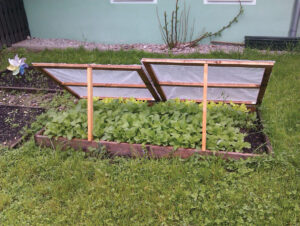 March usually is as blustery as a presidential debate, and for the most part, just as productive. There’s a lot of wind blowing, but little accomplished. At times, though, it makes you feel good, and you sense there is something just under the surface ready to be exposed with the warm-to-hot air.
March usually is as blustery as a presidential debate, and for the most part, just as productive. There’s a lot of wind blowing, but little accomplished. At times, though, it makes you feel good, and you sense there is something just under the surface ready to be exposed with the warm-to-hot air.
March is the month of “gosh, I’ve got this itch to do something.” After being cooped up all winter you want to go outside and just get something done in the ground, though as of this writing winter has sort of ditched Illinois except for rain.
Any true-green gardener wants to get a jump on Mother Nature, and starts chomping on the bit when the buds start swelling and the temperatures warm. However, they really do think of any and all ways to push back.
Getting the first tomato in the block, or county, is cause for chest swelling. That’s why gardeners will use gallon milk jugs with the bottoms cut out and placed over smaller transplants.
Costing a little more, plastic hoop houses and floating row covers, or even commercial products such as Walls-of-Water are available. These plastic tubes are filled with water which provides some protection as water absorbs heat during the day and radiates it back at night.
Cold frames, which are essentially boxes with glass tops tilted at an angle toward the sun, are another way of extending the growing season in the spring. Most of these 18-inch high boxes are hinged, so the top can be open on really warm days to let out built-up heat.
Cold frames are best for low growing cool-season vegetables such as lettuce, spinach and radish, but can be a method of conditioning warm season transplants to outdoor temperatures.
Some construction directions even call for working manures into the soil before setting the cold frame on top. The manures release heat as they decompose, protecting the plants.

However, fresh manure isn’t recommended as it might generate too much heat and can burn the young plants.
If you don’t have manures, fill up several gallon jugs with water to provide the heat sinks.
You can create a similar cold frame with bales of straw and an old storm window on top. It’s harder to create that angle, but it still will work as long as it doesn’t get too cold, and/or stay cold for an extended length of time, or if snow doesn’t cover the top.
Straw is better than hay as the latter potentially has many seeds, many of which are weeds.
Most of the above methods should give you six to eight weeks of extra growing season.









